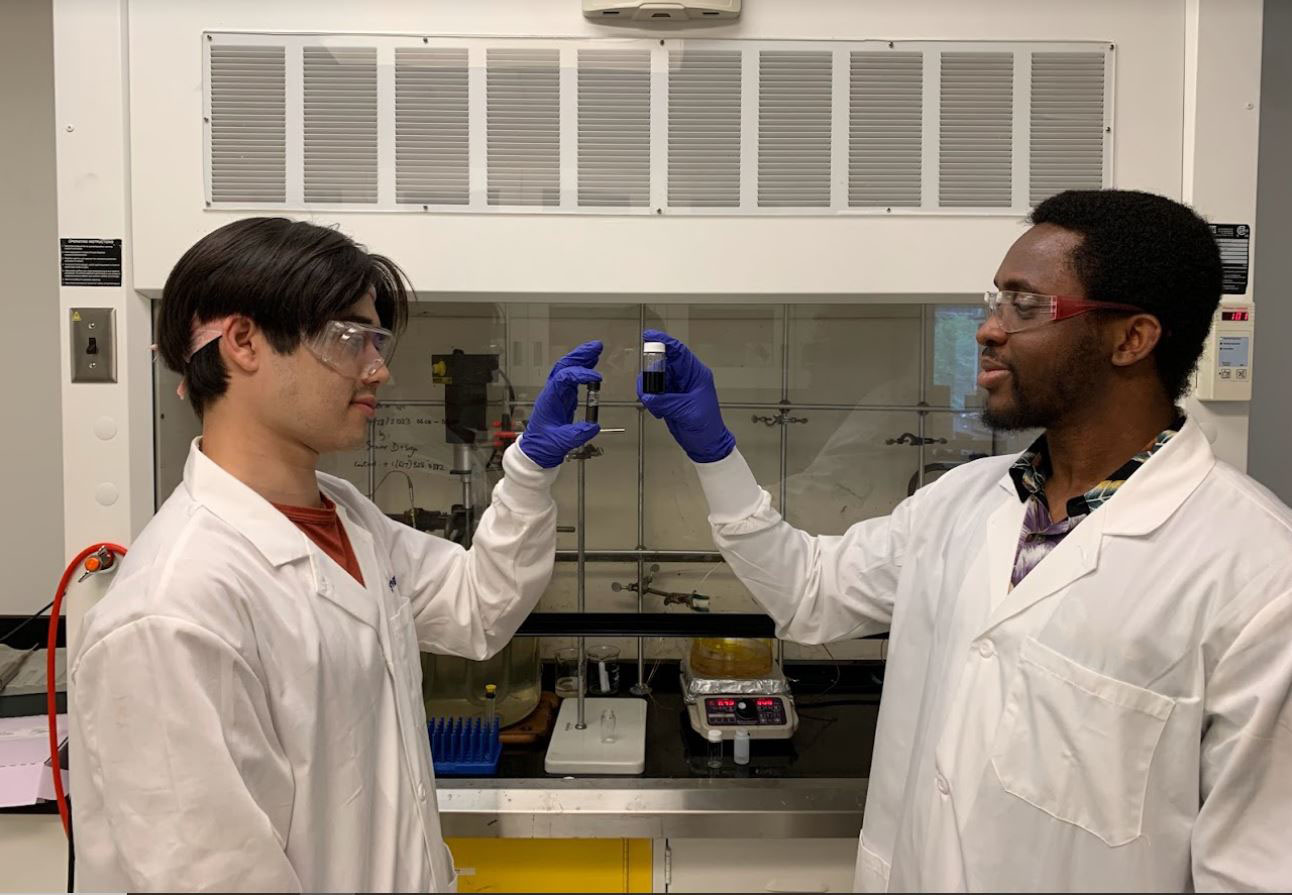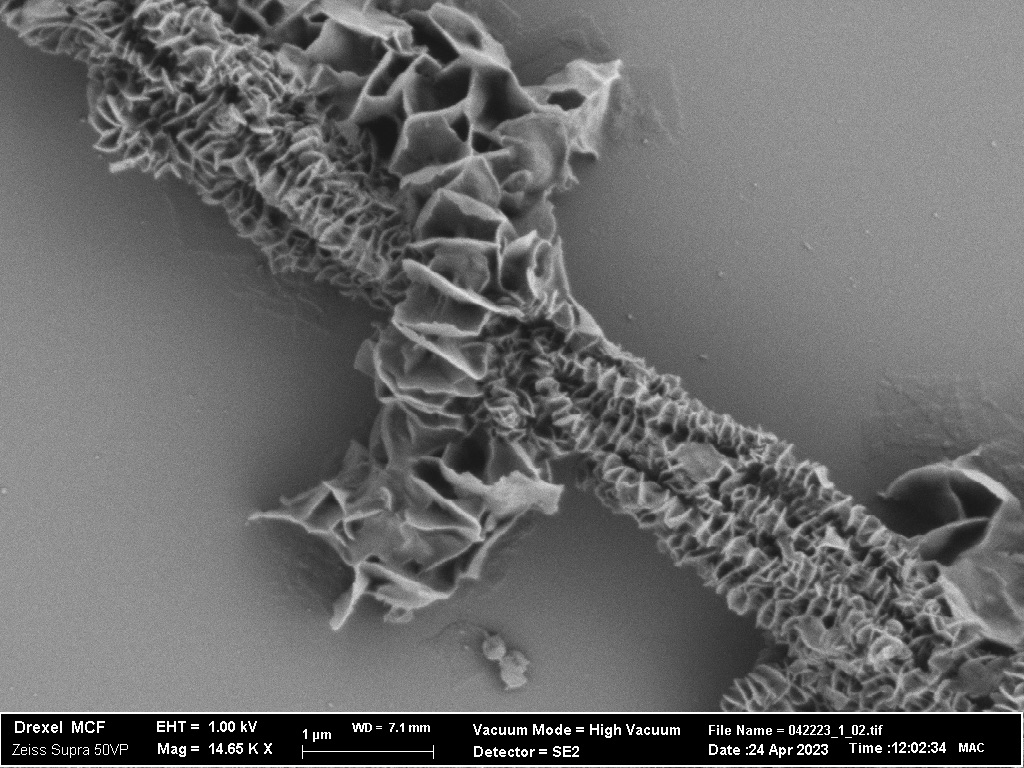 Chen and Gadasu
Chen and Gadasu
Mac Chen and Ed Gadasu had the same considerations when it came to their
senior design project: they wanted something to round out their studies of
the materials field and something that felt significant. This led both of
them to pursue a project in polymers, and the opportunity to address the
challenges of recycling plastics carried the significance they sought.
“One of the biggest problems over the last 70 years is the rise of mass
produced, single use disposable plastics,” Chen noted. “They have a product
lifetime of just days, but their material physical lifetime is hundreds or
thousands of years. That kind of imbalance inevitably generates waste.”
Plastics have proved challenging for the recycling industry. It is
tremendously costly to sort out all the different types of plastic
packaging, but when different plastics are melted down together for reuse,
the different polymer molecules will not co-mingle, preferring to clump
together with other molecules of their own kind. This is called phase
separation, and the tension at the interface between these phases creates
structural flaws so great that the product is useless.
“We want to be able to create a functional recycled plastic,” Gadasu stated.
“What is the solution? To make two things mix, you want to make sure that at
the interface of the two plastics they can connect. You do this through the
use of an agent, called a compatibilizer, that improves the interfacial
properties of the two materials.”
 A microscope view of the nanohybrid material that Chen and Gadasu are using.
A microscope view of the nanohybrid material that Chen and Gadasu are using.
In their project, the duo are investigating the use of nanohybrid shish
kebabs (NHSK), developed by
Christopher Li, PhD
, professor of materials science and engineering, to serve as a
compatibilizer. Nanohybrid shish kebabs are carbon nanotubes, which serve as
the skewer in the metaphor, that are dotted with polymer crystals which are
like the meat or vegetables of the kebab. Li’s group has created NHSKs for
polypropylene and polyethylene, two most common polymers in plastic
packaging.
Chen and Gadasu are working to create a dual polymer NHSK that has both
polypropylene and polyethylene together on one carbon nanotube, with the
hope that this NHSK can get the separate phases of the polymers to link up
to the nanotube, decreasing the tension between the phases and improving the
structural integrity of the recycled product.
“It’s like polymer diplomacy,” noted Gadasu.
It’s a daunting but exciting undertaking, and both students realize this
road to discovery is likely much longer than their year of senior design.
They expect, however, that future senior design teams will pick up wherever
they leave off.
“We are hopefully laying the groundwork for 3D printing of recycled
plastic,” Chen said. “The idea is that down the road it may be possible to
create drawn out filaments and use them in an application where it can hold
its structural integrity and has certain properties. If we can reduce some
of the barriers to the recycling processes that exist and get more
structural integrity in our materials, that enables further research and
tuning of properties for certain applications.”